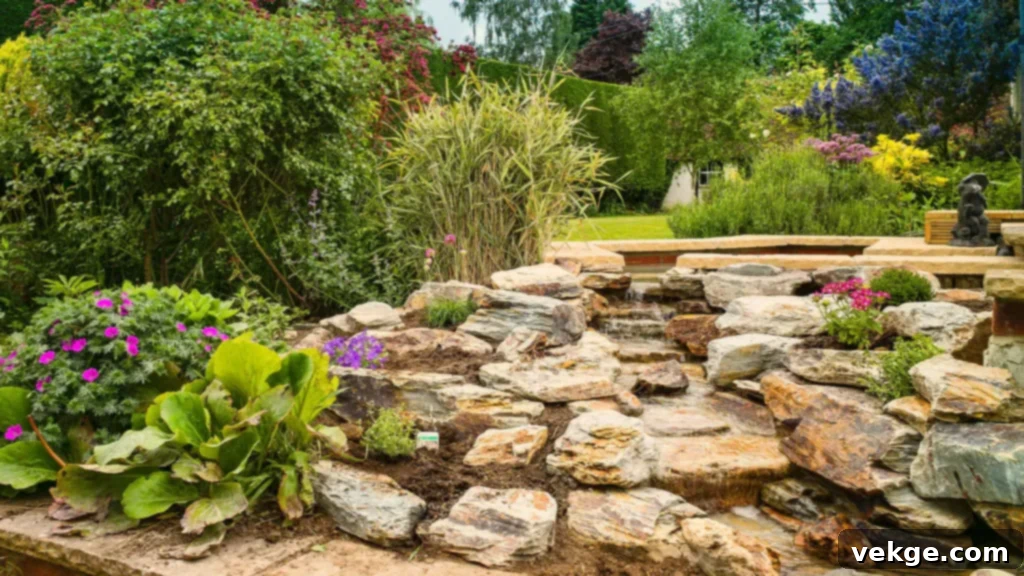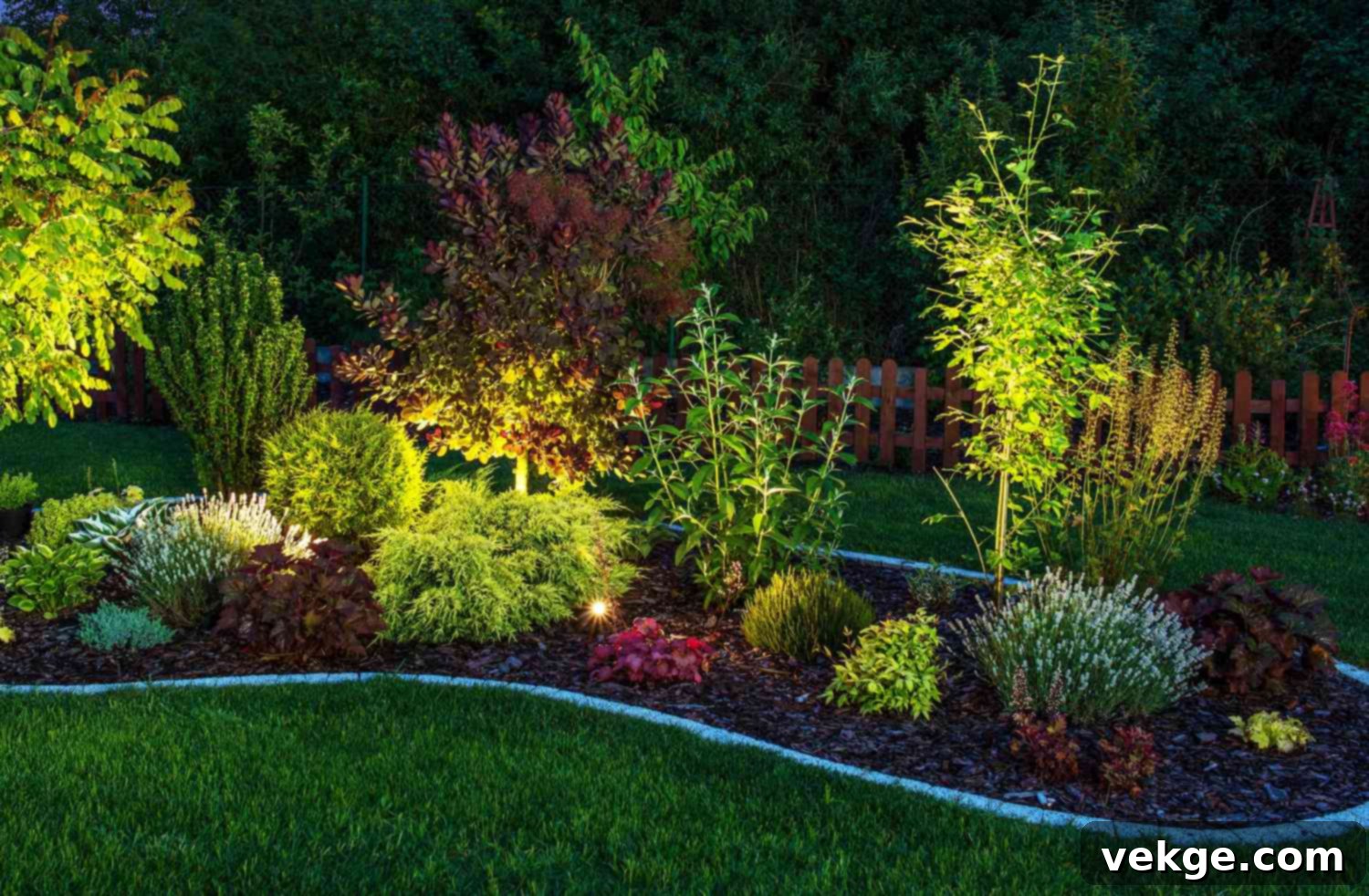Transform Your Outdoor Space: Innovative Landscaping Ideas for a Stunning Garden Glow-Up
Are you ready to elevate your home’s curb appeal and create an outdoor sanctuary you’ll love spending time in? Many homeowners recognize the value of a well-designed garden, with the average gardener often investing significantly in individual landscaping projects to achieve their vision. As warmer months beckon us outdoors, it’s the perfect time to explore fresh, innovative landscaping ideas that will make your outside space truly exceptional. Whether you’re dreaming of a tranquil retreat or a vibrant entertaining area, these lush pointers are designed to help your landscaping dreams blossom into reality. From budget-friendly updates to more ambitious transformations, let’s discover how to give your garden a spectacular glow-up just in time for summer and beyond.
Embrace Rustic Charm with Stone Designs and Raised Beds

There’s a timeless appeal to rustic stone designs that can instantly imbue your garden with character, especially if you’re aiming for that charming country cottage aesthetic. Integrating natural stone elements can transform a plain yard into a captivating landscape, adding texture, durability, and a sense of permanence.
Crafting Inviting Stone Paths
One of the most effective ways to introduce rustic stone is through a well-designed path. Imagine a winding pathway of flagstones or a circular gravel patio inviting you to explore your garden. These paths are not just visually appealing; they also serve crucial functional purposes. They provide clear structure, guiding visitors through your outdoor space, and crucially, they protect your delicate plants from being accidentally trodden upon. Consider various stone types—from rough-hewn flagstones that evoke an ancient feel to smooth river rocks that add a touch of tranquility. Pea gravel paths offer a delightful crunch underfoot and excellent drainage, while stepping stones create an informal, whimsical trail. The choice of material and design can significantly influence the overall ambiance of your garden, making it feel more established and inviting.
Elevate Your Gardening with Raised Beds
Another increasingly popular and highly beneficial feature in modern landscaping is the use of raised garden beds. As more people embrace the joy of growing their own fruits, vegetables, and herbs, raised beds offer an ideal solution. These elevated planting areas come with a myriad of advantages that contribute to healthier plants and a more enjoyable gardening experience.
Firstly, raised beds allow for superior control over soil quality. You can custom-blend the perfect mix of nutrient-rich soil, free from compacted earth and weeds often found in traditional ground beds. This optimized environment means your plants get the best possible start and continue to thrive. Secondly, they significantly improve water drainage. Good drainage is paramount for plant health; it prevents root rot and ensures that air properly circulates around the roots, leading to stronger, more robust growth. This also means less soil compaction over time, maintaining that ideal growing medium.
Beyond plant health, raised beds offer remarkable ergonomic benefits. For gardeners with mobility issues, or anyone who simply prefers to avoid excessive bending and kneeling, raised beds are a game-changer. They elevate the planting surface to a comfortable height, allowing for easier access for planting, weeding, and harvesting. This accessibility makes gardening a more inclusive and less physically demanding activity, ensuring that everyone can partake in the joy of cultivating their own green space. Materials for raised beds are diverse, ranging from classic wood (like cedar or redwood for natural resistance to rot) to durable stone, recycled plastic, or even galvanized metal, allowing you to match them perfectly with your garden’s aesthetic.
Master the Art of Layered Landscaping for Depth and Visual Interest

Landscape layering is a sophisticated design technique gaining significant traction among homeowners looking to create truly dynamic and visually engaging outdoor spaces. This method involves arranging plants and features at different heights and depths, effectively adding visual depth, enhancing interest, and creating a harmonious flow throughout your garden. It allows for beautiful color coordination and a rich tapestry of textures, making your garden feel more immersive and professional.
The Three Layers of Dynamic Garden Design
To master this technique, envision your garden as having three distinct layers, each playing a vital role in the overall composition:
1. The Foreground: The Welcome Mat of Your Garden
This is the first layer, closest to the viewer or the entry point of your garden. Here, you’ll want to feature low-growing plants, ground covers, and small, vibrant perennials that frame the view and immediately draw the eye inward. Think of colorful annuals like petunias or impatiens, delicate ornamental grasses that sway gently in the breeze, or creeping sedums that add interesting textures. This layer sets the initial mood, offering pops of color and intriguing forms that invite further exploration. It’s also an excellent place for seasonal flowers that can be changed out to reflect different times of the year, keeping your garden fresh and exciting.
2. The Midground: The Bridge of Interest
Moving back, the next section is your midground. This layer serves as the crucial ‘bridge’ between the low-lying foreground and the taller background elements. Here, you’ll plant medium-sized shrubs, robust perennial plants, and perhaps some showy ornamental grasses that provide more substance and structure than the foreground. Consider plants like hydrangeas, roses, or taller ferns that offer year-round interest. Evergreens in this layer can provide consistent color and form even during winter months, ensuring your garden remains attractive regardless of the season. The midground adds volume and creates a natural transition, preventing the garden from looking flat or disjointed.
3. The Background: The Enclosure and Focal Point
Finally, we arrive at the background section. This is where you establish the vertical elements and create a sense of enclosure and privacy. Plant trees—both tall and medium-sized—along with substantial large shrubs to form a natural backdrop. These larger elements act as a living wall, adding significant privacy, buffering noise, and providing shade. Deciduous trees offer beautiful seasonal changes, while evergreen varieties ensure year-round screening and a lush green presence. Beyond trees, this layer can also incorporate structural elements like arbors, pergolas, or tall trellises adorned with climbing plants. The background defines the boundaries of your garden, creates distinct outdoor rooms, and effectively frames the entire landscape, adding depth and drawing the eye through the space to a satisfying conclusion.
Unleash Modern Appeal with Gabion Features
For those seeking a contemporary and incredibly versatile addition to their landscaping plans, consider incorporating gabions. These distinctive features are essentially vertical cages or sturdy vessels, typically woven from robust steel wire and then filled with materials like rocks, concrete, or even recycled rubble. While you might have seen massive versions of gabions used in public works projects for erosion control, retaining walls, or managing water run-off, their aesthetic potential has not gone unnoticed by landscape designers.
In recent years, gabions have transcended their utilitarian origins and are now becoming a popular, stylish design choice in gardens worldwide. Their industrial-chic look, combined with natural stone or other fillings, offers a unique blend of ruggedness and modern elegance. Gabions are incredibly adaptable and can be used in numerous creative ways to enhance your outdoor space:
- Seating: Construct durable and attractive garden benches by building gabion bases and topping them with comfortable wooden slats.
- Planters: Create unusual and eye-catching planters for large shrubs, small trees, or a collection of vibrant annuals. The permeable nature of the gabion allows for excellent drainage.
- Retaining Walls: Beyond their traditional function, gabion retaining walls can be designed with a cleaner, more decorative finish for garden terraces or defining different levels.
- Decorative Walls and Fences: Use gabions to build stylish privacy screens, boundary fences, or low decorative walls that delineate garden areas.
- Water Features: Integrate gabions into waterfalls or ponds, where the stones can filter water and create a natural, rustic aesthetic.
- Fire Pit Surrounds: A gabion wall filled with fire-resistant stones can make a striking and safe surround for an outdoor fire pit.
The advantages of gabions extend beyond their unique appearance. They are incredibly durable, able to withstand various weather conditions, and their permeability allows for natural water flow, which is beneficial for the surrounding landscape. They can also be a more eco-friendly option if filled with locally sourced or recycled materials. Whether you’re aiming for a minimalist, industrial, or even a contemporary natural look, gabions offer a fantastic way to add a distinctive, long-lasting, and conversation-starting element to your garden design.
There you have it—a collection of innovative ideas to spark your creativity and inspire a stunning landscaping transformation in your garden this summer. From the timeless appeal of rustic stone paths and the practical elegance of raised beds to the sophisticated visual depth of layered landscapes and the modern edge of gabion features, your outdoor space holds endless potential. Whatever your vision and budget, the most important step is to get out there, start planning, and enjoy the rewarding process of creating your dream garden!
